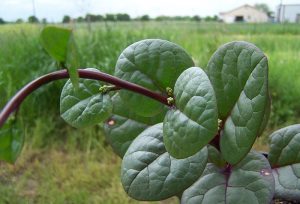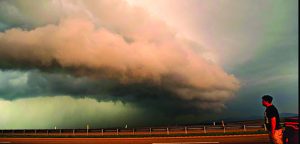by Christine Reid
Folks say there’s only two kinds of weather here in Texas: floods and droughts. After experiencing the last few years of weather extremes, few would disagree with that. From the intense heat and dry weather of 2011 to the violent gully washers of 2015 and 2016, some Central Texas gardeners are throwing up their hands, wondering how to deal with it all. While no one can change the weather, we can adjust to it, especially when it comes to watering plants in the ground.
To begin with, not enough people water their gardens correctly, especially in the summer. Many water too often and too lightly or they run out to the garden, dump a bunch of water on the ground when they happen to think of it and then race back indoors to stand under the air conditioning vent. They water in the blazing heat of the day or late at night. The point is, they’re wasting time as well as water and they’re putting their plants at risk of getting diseases or dying.
A plant’s water needs are based on many factors: how established it is, the time of year, the quality of the soil, the variety of plant, the current weather conditions, the time of day and so on. It’s important to know the water needs of each plant in order to avoid problems later. In general, the best time to water plants is early in the morning. Even though it may be more convenient, watering in the evening means that wet leaves may not dry until sunup, making the plant more susceptible to fungal diseases.
Keep in mind that you’re not actually watering the plant, you’re watering the soil, with the water eventually getting to the roots of the plant. So, soil structure is a very important factor to consider when watering. Healthy soil holds moisture better. Not surprisingly, water goes quickly through sandy soil and slowly through clay soil, which doesn’t work well for most plants. Soil that has the appropriate amount of organic matter, however, will have the necessary pore space and water holding capabilities. As the water is applied to the soil, it seeps down, layer by layer. If not enough water has been distributed, it won’t get to the root zone, while if you over water, the roots can drown. What makes it difficult is that plants that have received too much or too little water can look the same: wilted. If plants are drooping at the end of a hot day, check the soil. If it’s moist and then the plants have perked back up the next morning, they’re probably getting the right amount of moisture.
To see if plants need watering, check the soil’s moisture level six inches down. In general, if you have healthy, well-mulched (more about that in a bit) soil, watering the garden once or twice a week in the summer should suffice. When watering by hand, take several swipes with the hose or watering can until the area is thoroughly moistened. If using an in-ground watering system, check to see how long it takes to get the area adequately watered. Using a wand extension is better than using sprinklers, which can lose 30 percent or more of the wet stuff to evaporation. Drip irrigation, which is up to 90 percent efficient, is considered one of the best methods to water the landscape. Do some research to find the right system for your garden and budget.
One of the simplest ways to maximize the water retention in the soil is to use mulch. According to horticulturist Doug Welsh in “Texas Garden Almanac,” mulch is the “lowest technology, highest-impact gardening practice of all.” Along with helping to retain moisture, mulch suppresses weeds, moderates soil temperature, can provide organic matter and reduces soil erosion. Natural products are the better choice, like grass clippings, leaves, old hay or compost. Many people also like using hardwood mulch or cedar mulch. Whatever you use, be generous and pile the mulch 2-6 inches thick, depending on the plant and the material being used. In general, 2-3 inches of mulch is a good amount to start with in this area. Don’t let the mulch touch the base of the tree or plant, as that could cause rotting.
There will also be times when water is the last thing your garden needs. And sometimes, flooding or excessive rainfall can cause a few plants, especially low-water varieties, to succumb. Just shake your fist at the sky and carry on, if that happens. Other plants may look miserable for a few weeks, but will be able to recover. Besides having an umbrella handy, there are a few things to remember when the skies open up.
To avoid compacting the soil or spreading diseases, don’t walk in the garden when it’s wet and muddy. If you must go in the garden when it’s rained heavily, put down some boards or mulch to walk on in order to protect the soil. Also, don’t dig in saturated soil – wait until it’s dried out before working in it. Watch for wet weather-loving pests like slugs that feed on both living and decaying plants. Hand pick them or set out bowls of cheap beer that’s been sunk into the ground so that the slugs will fall in and die happy.
Applying the right amount of water in your landscape not only saves you time and money, it also means healthier plants that will be better equipped to handle almost any kind of weather, even in Texas.
Any questions? Send an email to reidsnursery@gmail.com or call us at (512) 398-6011. Enjoy your garden!
Watering Tips
– In general, the best time to water plants is early in the morning.
– To see if plants need watering, check the soil’s moisture level six inches down.
– Use mulch to maximize water retention in the soil.
– Using a wand extension is better than using sprinklers, which can lose 30 percent or more water to evaporation.
– To avoid compacting the soil or spreading diseases, don’t walk in the garden when it’s wet and muddy.









